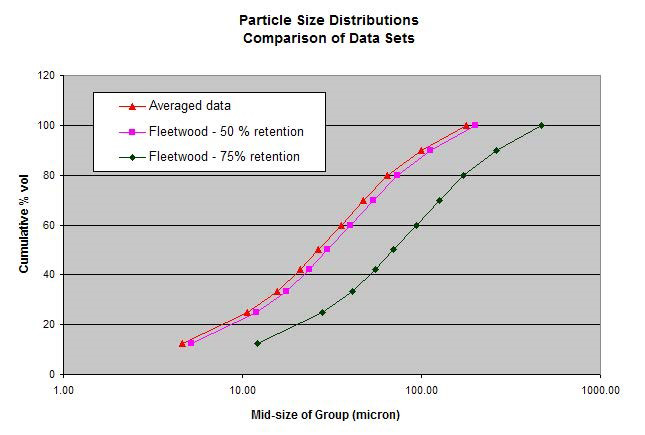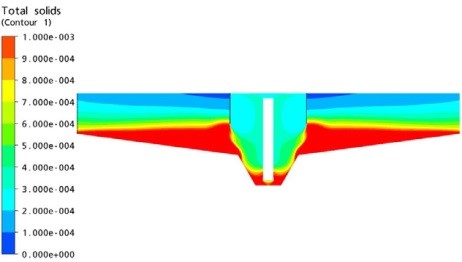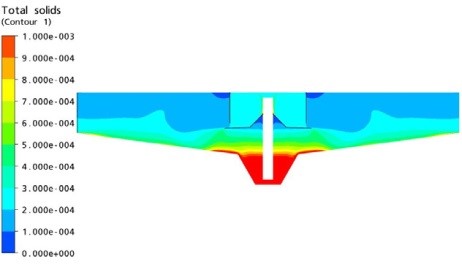Modelling of Fleetwood Primary Tanks
Our client, Fleetwood Waste Water Treatment Works (WTW), wanted to determine the most effective primary tank design – including number and size. Fleetwood also wished to investigate whether coagulation could improve settling sufficiently enough to allow the up flow rate to be increased.
Our Approach
A transient CFD process model of the primary tank was used and the sludge phase was modelled using the multiple drift flux method. The primary solids were divided into 10 discrete particle sizes and the CFD code was then augmented with an additional set of transport equations to represent the sludge [fusion_builder_container hundred_percent=”yes” overflow=”visible”][fusion_builder_row][fusion_builder_column type=”1_1″ background_position=”left top” background_color=”” border_size=”” border_color=”” border_style=”solid” spacing=”yes” background_image=”” background_repeat=”no-repeat” padding=”” margin_top=”0px” margin_bottom=”0px” class=”” id=”” animation_type=”” animation_speed=”0.3″ animation_direction=”left” hide_on_mobile=”no” center_content=”no” min_height=”none”][1].
The number and size of tanks and the effect of dosing on the retention efficiency was investigated by modelling the settling of flocculating and nonflocculating solids, using a representative Particle Size Distribution (PSD) for the dosed and undosed solids. The PSD for Fleetwood sludge (Figure 1) was average from experimental data [2,3] to give theoretically 50% retention efficiency for undosed solids and 75% for dosed solids according to 1D settling theory.
Figure 1: PSD for Dosed and Undosed Sludge
CFD analysis showed the primary tanks could retain up to 50% of solids from the influent flow. If the primary sludge was then dosed and particle flocculation occurred, this would increase the solid sizes and PSD – potentially increasing the tank retention efficiency by a further 20% (Figure 2 shows solid concentration though the tank).
Outcome
As flow entered the tank it travelled along the water surface in an outward radial direction until it hit the stilling well, where it was forced downwards. As the flow travelled below the stilling well, its high inertia forced the vertical flow into the tanks hopper and caused mixing and re-suspension of settled solids. To prevent this disturbance, a horizontal floor baffle was placed under the stilling well (Figure 2). Results showed that the addition of the floor baffle caused the vertical flow travelling down the stilling well to change direction radially along the settling region of the tank, avoiding the hopper and re-suspension of settled solids. This baffle was shown to increase the retention efficiency by 10% at all flow conditions. The baffle reduced the solid concentration build up in the settlement zone and reduced the effluent concentration.
Figure 2: Solids Concentration Through Tank With (Left) and Without (Right) a Floor Baffle
References
[1] Burt, D.J. and Gilbertson, M.A. “Extended Drift Flux Models for Waste Water Sludges”, PSA 2005, Stratford, Sept 2005
[2] Tiehm, A., Herwig, V. and Neis, U., “Particle size analysis for improved sedimentation and filtration in waste water treatment”, Water Science and Technology, v 39 (8), pp 99-106
[3] Robinson, C., “Modelling Minworth STW Circular Primary Tanks”, MMU043-R-02, 2006.
For more information surrounding our primary tank modelling capabilities in the Water Industry, please contact us on 0117 960 2212 (Bristol) / 01904 428721 (York) or email us.[/fusion_builder_column][/fusion_builder_row][/fusion_builder_container]


